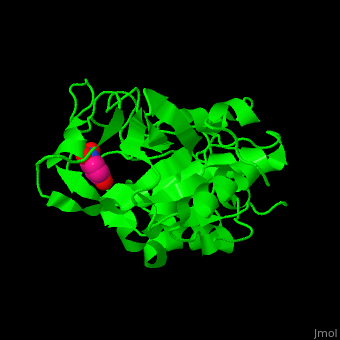Function
Cathepsin (CTS) is a protease which becomes activated at low pH. It is found in lysosomes. Members of the CTS group are denoted as CTSA, CTSB etc and cleave proteins at different peptide bonds. The CTSs are expressed as an inactive precursor pro-CTS (PCTS) which becomes active when a long residue prosegment is cleaved off producing the mature CTS (MCTS).[1]
- CTS B is a cysteine protease.
- CTS D is an aspartyl protease which degrades insulin.
Disease
CTS B overexpression is associated with metastatic phenotypes in cancer. CTS C mutations are responsible for the Papillon-Lefevre syndrome. CTS K is involved in osteoporosis.
Relevance
CTS B breaks down proteins which are involved in amyloid plaques. CTS D is used as a breast cancer marker.
Structural highlights
CTS B is a cysteine protease. The active site contains a cysteine residue from the N-terminal domain and His residue from the C-terminal domain.

